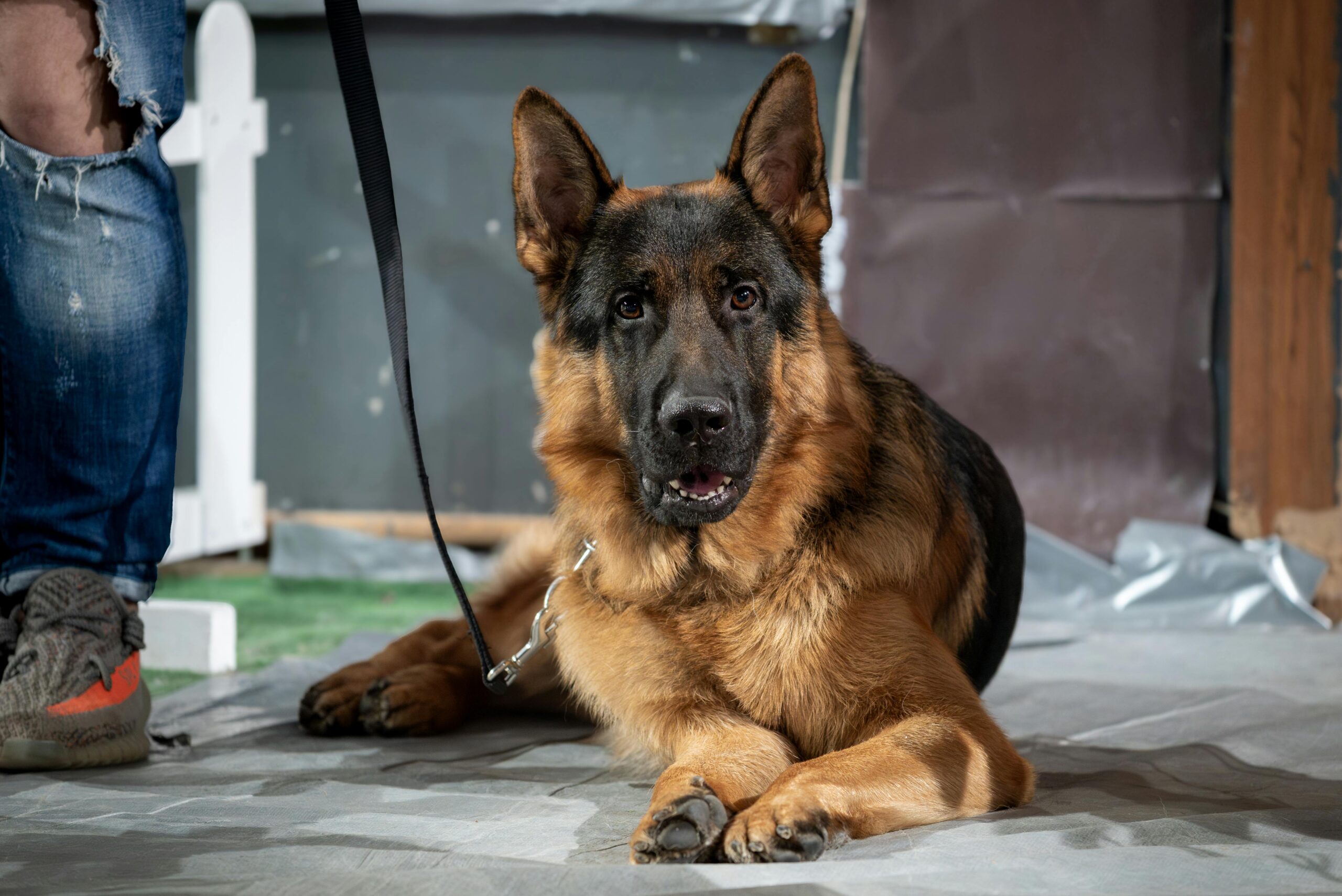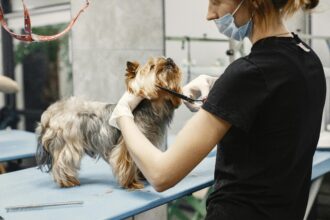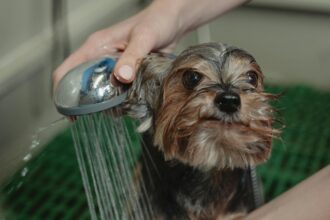Let’s talk ears those soft, floppy, sometimes fluffy things our dogs twitch when they’re dreaming or when we whisper sweet nothings (or the dreaded “bath time”). While many pet parents stay on top of baths, brushing, and nail trims, dog ear cleaning often gets overlooked. And honestly? It shouldn’t.
Ear health is a big deal for our four-legged friends. Ignoring those little canals can lead to big issues itching, infections, even hearing loss. But with the right know-how (and a little help from the pros), keeping your pup’s ears clean can be as routine as a walk in the park.
Let’s break it down, one gentle swab at a time.
Why Dog Ear Cleaning Is So Important (Seriously)
Think about where your dog goes: parks, trails, doggy daycare, your couch, that suspicious corner of the backyard. Along the way, their ears collect dirt, wax, pollen, and sometimes creepy crawlies. Left unchecked, this debris can turn into an ear infection faster than you can say “vet bill.”
And some breeds are more prone than others. Got a floppy-eared lovebug like a Cocker Spaniel or a Golden Retriever? Their ear canals are like cosy little cabins for moisture, perfect for yeast and bacteria. Frenchies and bulldogs, with their narrow canals, aren’t off the hook either.
Ear infections don’t just hurt, they stink. Literally. That sour, musty smell? That’s your dog begging for an ear checkup.
Signs Your Dog Needs an Ear Cleaning (Beyond the Obvious)
Sure, some dogs will just plop into your lap and beg for help. Others… not so much. So what should you look for?
- Frequent head shaking (like they’re trying to flick water out)
- Scratching or pawing at one ear
- Redness or swelling inside the ear flap
- Dark wax buildup or visible gunk
- A foul odor that hits you like a wave
- Whimpering when you touch their ears
If any of that sounds familiar, it might be time to grab the cotton balls or call in the pros.
DIY vs. Professional Grooming: When to Handle It at Home (and When Not To)
Some ear cleanings are simple and safe to do at home. Others? Not so much.
If your dog just needs routine maintenance, say, once a month or after a particularly muddy hike you’re good to go with a quality cleanser and a gentle hand.
But if there’s swelling, smell, or sensitivity? That’s a red flag. Infections need veterinary treatment, not just cleaning.
Professional groomers, like the ones who also handle dog baths, anal gland expression, and sanitary trims, know how to tell the difference. They’ll spot trouble early and let you know when it’s time to call your vet instead of Googling “what is that brown stuff in my dog’s ear.”
How the Pros Clean Dog Ears (No Stress, No Drama)
Here’s what a typical dog ear cleaning looks like from a trained groomer’s point of view:
- Check First
Before anything gets squirted or swabbed, they do a visual inspection. Redness? Discharge? Odor? If things look off, they won’t proceed; they’ll recommend a vet visit. - Gentle Cleansing Solution
A vet-approved, alcohol-free solution is applied to loosen up wax and debris. The key word here is gentle. No stinging, no overwhelming smell. - Massage Time
They massage the base of the ear for 20–30 seconds, helping the solution work its magic deeper inside the canal (but not too deep we’ll get to that). - Let It Shake
Your pup will instinctively shake their head. That’s good! It helps bring all the loosened debris to the surface. - Wipe, Don’t Probe
With cotton pads (never Q-tips), they wipe out the outer ear and visible parts of the canal. No poking. No pushing wax deeper. Just gentle, effective cleaning.
Grooming Add-Ons That Pair Perfectly with Ear Cleaning
Ear cleaning isn’t a standalone hero; it’s part of a whole wellness routine. And when you’re already at the groomer, why not make it a spa day?
- Dog Bath: A full wash with pH-balanced dog shampoo helps remove allergens and bacteria that could travel to the ears. Bonus: your pup smells amazing.
- Dog Nail Trim: Overgrown nails can cause posture issues, which can lead to scratching—yes, including ears. Trim those claws!
- Sanitary Trim: Keeps things clean down there and prevents excess fur from becoming a breeding ground for bacteria that can migrate (yep, even to ears).
- Deshedding: For double-coated breeds, excess fur can trap moisture around the ears. A proper dog brush session with deshedding tools keeps things dry and breathable.
- Anal Gland Expression: Okay, this one’s not glamorous, but impacted glands can cause dogs to scoot and scratch sometimes using their ears to express discomfort elsewhere.
- Flea & Tick Treatment: Fleas and ticks love ears. A good preventative keeps those bloodsuckers far away from sensitive ear tissue.
- Dental Cleaning for Dogs: Believe it or not, chronic dental issues can affect ear health. Infections in the mouth can spread to clean teeth, healthy ears.
Products Groomers Trust (And You Can, Too)
Not all ear cleaners are created equal. Some over-the-counter ones are too harsh, others are all fluff and fragrance. Here are a few groomer-approved options:
- Zymox Otic Enzymatic Solution: Great for dogs with chronic ear issues.
- Vet’s Best Ear Relief Wash & Dry: A natural solution with soothing aloe and chamomile.
- Virbac Epi-Otic Advanced: A vet-favorite, especially for dogs prone to wax buildup.
And for wiping? Go for large, soft cotton pads or gauze not Q-tips or human ear swabs. You want to clean, not cause trauma.
How Often Should You Clean Your Dog’s Ears?
There’s no one-size-fits-all answer here. Frequency depends on breed, activity level, and overall health.
Here’s a general guide:
- Once a week: Dogs who swim often or are prone to infections (like Labs, Spaniels, and Poodles).
- Every 2–4 weeks: Most medium-to-low-risk breeds.
- Only as needed: Dogs with upright ears (like Huskies or German Shepherds) often self-clean better and may only need monthly care.
Too much cleaning can actually irritate the ear canal and strip it of protective oils. So unless your groomer or vet says otherwise, less is more.
Myths That Need Busting (Right Now)
Let’s clear the air on a few common misconceptions:
“If it ain’t dirty, don’t touch it.”
Not quite. By the time your dog’s ears look dirty, they may already be inflamed. Routine check-ins help you stay ahead.
“It’s just wax, it’ll come out on its own.”
Sometimes. But some wax types are stubborn and need help, especially in dogs with allergies or floppy ears.
“Ear hair should be plucked every time.”
Actually, no. Plucking can cause microtears and inflammation. These days, most groomers only remove hair if it’s causing a problem.
What to Avoid: Rookie Mistakes That Can Lead to Trouble
Let’s keep it simple:
- No Q-tips deep in the canal
- No alcohol or hydrogen peroxide (they dry and irritate)
- No human ear cleaners (they’re formulated differently)
- No ignoring signs of discomfort if your dog’s scratching or shaking, check it out
And one more? Don’t use ear cleaning as punishment. If your dog dreads it, ease in with treats, praise, and short sessions. Make it part of the cuddle routine, not a wrestling match.
When to Call the Vet Instead of the Groomer
Ear cleaning is routine… until it’s not.
Call your vet if:
- There’s blood or dark discharge
- The ear is swollen shut or visibly inflamed
- Your dog cries out or bites when you touch their ear
- They’ve had repeated infections without relief
Pro groomers can maintain a healthy ear, but they can’t treat an infected one. Knowing the difference? That’s love.
Final Bark: A Little Ear Love Goes a Long Way
It’s easy to forget about those ears when your dog’s wagging their tail or bouncing around the yard. But a few minutes of attention every month can prevent weeks of discomfort, vet bills, and stinky surprises.
Whether you’re handling it at home or leaving it to the professionals alongside your dog’s regular bath, nail trim, or even dental cleaning ear care is a must for a happy, healthy pup.
And trust us, once your dog realises ear cleanings come with head massages and treats? They’ll be all ears.








